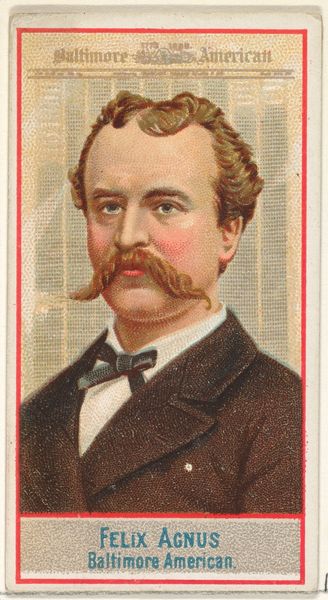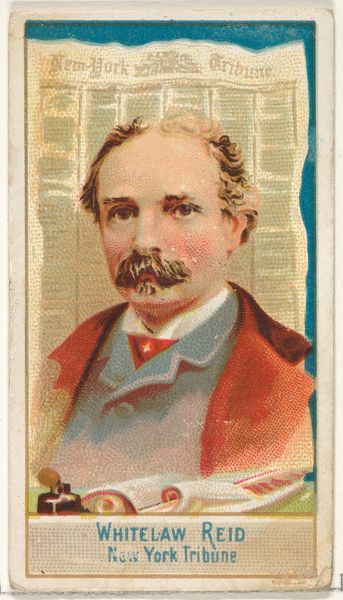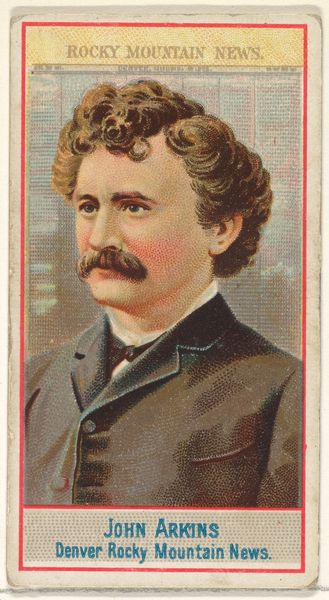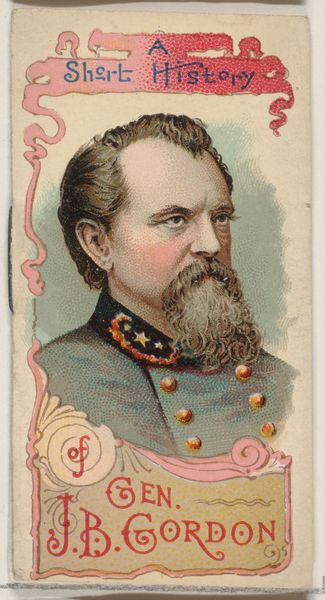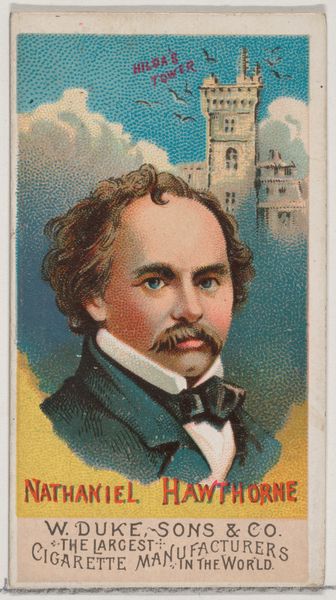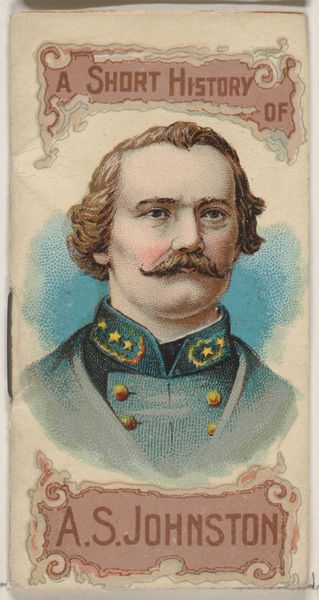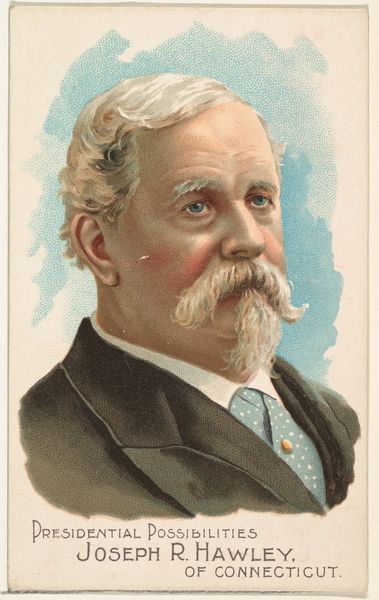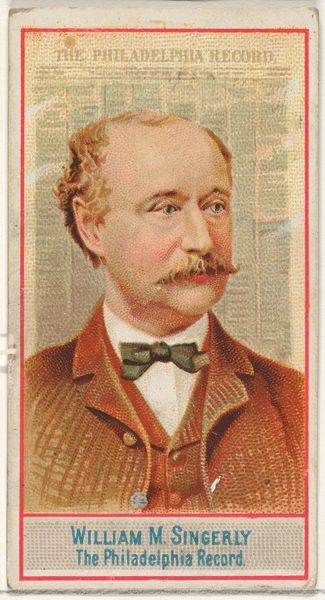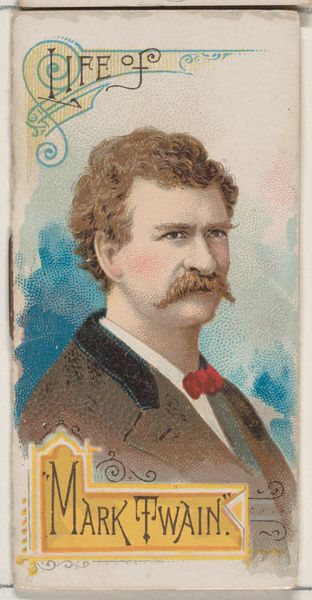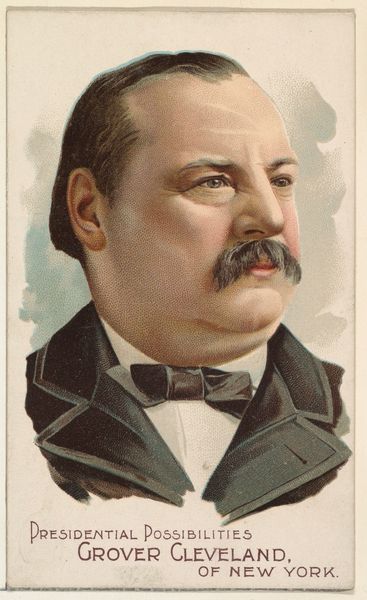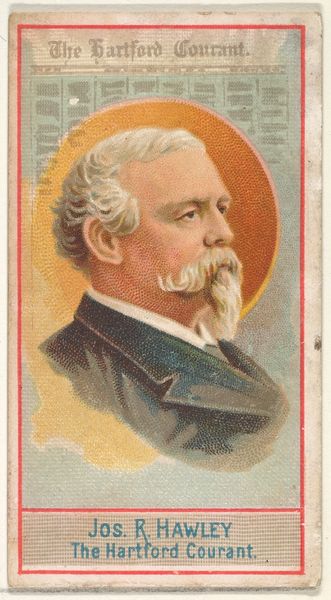
Edwin Forrest, from the series Great Americans (N76) for Duke brand cigarettes 1888
0:00
0:00
drawing, print, engraving
#
portrait
#
drawing
# print
#
caricature
#
figuration
#
men
#
portrait drawing
#
history-painting
#
academic-art
#
engraving
Dimensions: Sheet: 2 3/4 × 1 1/2 in. (7 × 3.8 cm)
Copyright: Public Domain
Curator: This small chromolithograph, dating back to 1888, is titled "Edwin Forrest" and comes from a series called "Great Americans" produced by W. Duke, Sons & Co. as part of their cigarette branding. Editor: My initial reaction is how dramatically theatrical it feels for something advertising tobacco. It’s a bit over-the-top in a humorous way. The small portrait of Hamlet feels almost dreamlike, floating up there! Curator: The portrait's creation involved several hands, emphasizing a commercial venture more than individual artistic expression. Lithography allowed mass production of these cards. Considering the target demographic, this image of Edwin Forrest, a major figure in American theatre, suggests a particular aspiration to cultural refinement amongst cigarette consumers. Editor: That's a key point. Thinking about how this circulated, packaged with cigarettes, it’s directly associating the consumption of tobacco with American ideals, theater, and masculinity. How many of the consumers were given that level of cultural engagement in their lives? It makes you wonder who was really meant to consume culture here, Forrest, or those who consumed the cigarettes. Curator: Exactly! And the choice of Forrest as the "Great American" speaks volumes. His persona – the muscular, working-class hero on stage – resonated with a broad audience. But framing that image with the commerce of cigarette production reveals the commodification of national identity and celebrity. It uses theater’s popular reach, its illusion of democratic inclusion, to advance industrial capital. Editor: It's brilliant but also manipulative. Look at how his Hamlet image is placed alongside his portrait to emphasize an image. Was he the voice of America, or the brand ambassador of its capitalist consumption, peddling escapism and dreams with every packet? It is interesting that we still put people on pedestals the same way. Curator: Precisely. This seemingly simple portrait card serves as a window into late 19th-century American culture, revealing complex dynamics between art, commerce, and national identity. Editor: Looking at it this way shifts my initial reaction. I no longer see something innocently theatrical but something that, to its core, understood America and the best way to brand anything, with identity.
Comments
No comments
Be the first to comment and join the conversation on the ultimate creative platform.
